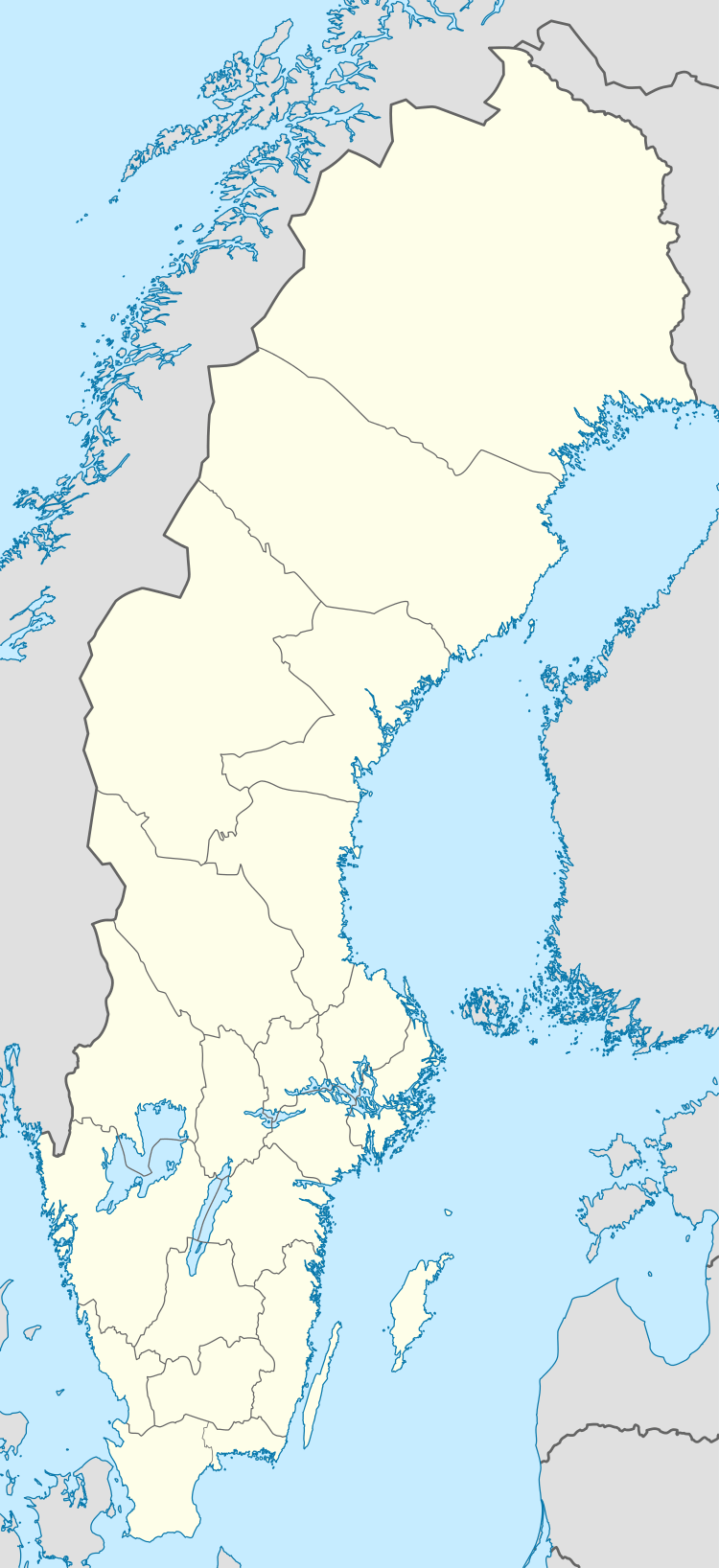Eksjö
Eksjö is a locality and the seat of Eksjö Municipality in Jönköping County, Sweden, with 9,701 inhabitants in 2010.[1]
Eksjö | |
|---|---|
Old Eksjö in July 2007 | |
 Eksjö  Eksjö | |
| Coordinates: 57°40′01″N 14°58′13″E | |
| Country | |
| Province | Småland |
| County | Jönköping County |
| Municipality | Eksjö Municipality |
| Founded | 1403 |
| Area | |
| • Total | 8.34 km2 (3.22 sq mi) |
| Elevation | 215 m (705 ft) |
| Population (31 December 2010)[1] | |
| • Total | 9,701 |
| • Density | 1,163/km2 (3,010/sq mi) |
| Time zone | UTC+1 (CET) |
| • Summer (DST) | UTC+2 (CEST) |
| Postal code | 575 xx |
| Area code(s) | (+46) 38 |
| Climate | Dfb |
| Website | Official website |
History
The city of Eksjö most likely appeared sometime in the Middle Ages when it was the centre for the thing, a regional council. It is first mentioned on April 22, 1345, under the name "Ekesiö" in an estate sale court protocol.[2] It was given its charter in 1403 by the King Erik av Pommern.
In the 16th century Eksjö was one of the six Swedish cities in the province of Småland. The others were Jönköping, Kalmar, Västervik, Växjö and Vimmerby.
After the crowning of King Gustav Vasa in 1524, the partisan leader Nils Dacke led a rebellion. Dacke took control of the area and was supported by the locals, also in Eksjö. After Dacke had been killed by the Royal army, his body parts were hung in public places, including in Eksjö, to quench any notions of new uprising.
This may also have contributed to the decision of Gustav Vasa to revoke the city charter of Eksjö in 1544. There are several monuments and folk museums honouring these times around the province and in Eksjö municipality, and in the dense Smålandian forests where Dacke lived.
In August 2015, a fire occurred in Old Eksjö.[3]
Relocation
During the Nordic Seven Years' War Rantzau's army that had been pillaging Östergötland reached Eksjö after successfully avoiding Swedish enclosure attempts by crossing lake Sommen that had recently frozen.[4][5] As Rantzau arrived Eksjö was burnt to the ground in 1568 and subsequently rebuilt at a somewhat different location. The construction was led by the Dutchman Arendt de Roy.

Development
The city emerged as a centre for the oxen trades but never really prospered and remained a small town until a heath outside the town became the point of assembly for the Småland Regiment. The city continued to be in the centre of military establishments, with the coming of the engineering battalion and the Husars of Småland, in southern Sweden, hence the lack of large industrial establishments.
Notable People from Eksjö
- Niklas Hjalmarsson, Professional ice hockey defenceman for the Arizona Coyotes, Stanley Cup champion
- Reverend F. M. Johnson of the Swedish Mission Covenant Church in Chicago, Illinois [6]
Sights
Like many other Swedish cities, Eksjö was struck by fire in the 19th century, with half of the city burning down in 1856. But the northern part of the original wooden city remained intact, with some buildings dating back to the reconstruction of the city in 1568. 56 buildings are registered historic landmarks. A fire in August 2015 that killed one person destroyed some 17th-century buildings.[7][8]
International relations
Twin towns — Sister cities
Eksjö is twinned with:[9]
References
| Wikimedia Commons has media related to Eksjö. |
| Wikivoyage has a travel guide for Eksjö. |
- "Tätorternas landareal, folkmängd och invånare per km2 2005 och 2010" (in Swedish). Statistics Sweden. 14 December 2011. Archived from the original on 2012-01-10. Retrieved 10 January 2012.
- Eksjö District Court information page
- "'Out of control' fire threatens Swedish town". Local Sweden. 16 August 2015. Retrieved 2 December 2019.
- Henrikson, Alf (1978). "Sjuårskriget". Svensk historia (in Swedish). Albert Bonniers Förlag.
- "Här slaktades hundratals när de försvarade sina hem" (in Swedish). JP.se. November 19, 2016. Retrieved April 12, 2019.
- "F.M. Johnson Is Dead Well-Known Mission Pastor". Svenska Tribunen-Nyheter. 10 September 1930. Retrieved 4 December 2017.
- "Wooden town resembles 'war zone' after huge fire", The Local (Sweden), 17 August 2015.
- "Kulturbyggnad totalförstörd i storbrand", Sveriges Radio, 16 August 2015 (in Swedish).
- "Vänorter". Eksjö Kommun. Retrieved 4 December 2017.